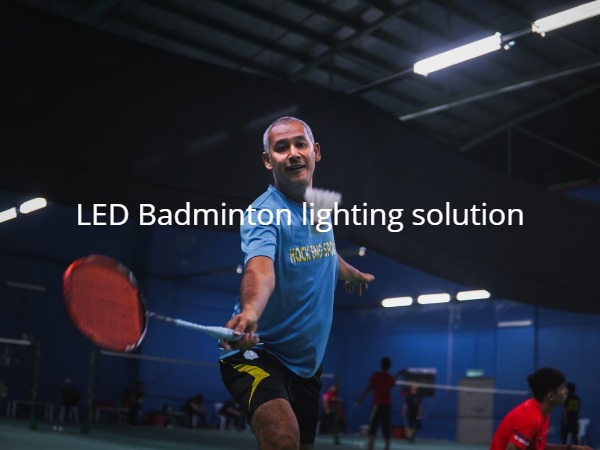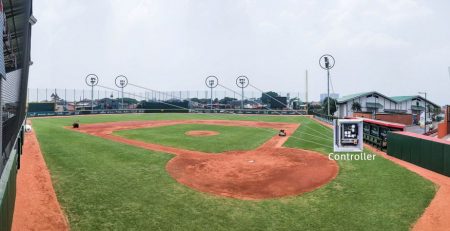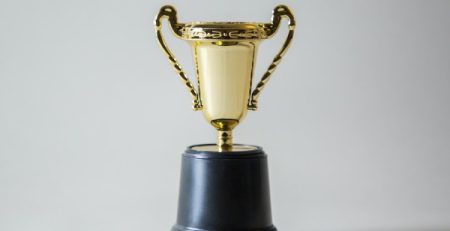Ultimate Guide: Badminton Court Lighting Design & Cost
Proper lighting is crucial for a successful badminton game. High-quality lighting effects not only enhance the overall experience but also double player performance and safety, while minimizing potential damage. The right badminton court lighting design can create an environment that promotes focus, visibility, and comfort for players.
There are various options available to meet specific requirements. LED sports lighting, including outdoor LED spotlights and LED arena lighting, has gained popularity over traditional metal halide lamps in stadiums and halls due to its high-quality illumination, energy efficiency, and long lifespan. These LED lights can easily illuminate large areas, such as stadiums and halls, up to several meters in size. These high-power LED stadium lights offer superior brightness, reduced glare, and improved lighting uniformity compared to traditional metal halide lamps. They are ideal for illuminating sports halls and can effectively light up large areas of up to several meters.
An effective badminton court lighting system should ensure proper distribution of light with adequate vertical illumination and minimal flicker. It should also consider factors like contrast, color temperature, and natural/artificial light balance to provide an optimal lighting environment for players.
We will discuss the importance of proper lighting design in meeting professional standards while ensuring player safety. So let’s dive into the world of badminton court lighting and discover how it can enhance your game!

Table of Contents
Guide to LED Badminton Court Lighting
Advantages of using LED lights for badminton court illumination
LED lights have become increasingly popular for illuminating badminton courts due to their numerous advantages. One key benefit of lighting design is their exceptional energy efficiency, which allows for significant cost savings in the long run. Lighting design takes into account the lighting requirements for a space, including both natural lighting and artificial lighting. Compared to traditional lighting options, such as incandescent or fluorescent bulbs, LED lights consume much less electricity while providing bright and uniform illumination.
Another advantage of LED lighting is its durability and longevity. LED bulbs have an impressive lifespan that can reach up to 50,000 hours or more. With their long-lasting nature, LED bulbs are a popular choice in both artificial lighting and lighting design. Whether it’s natural lighting or mixed lighting, LED bulbs provide a reliable and efficient solution. With their long-lasting nature, LED bulbs are a popular choice in both artificial lighting and lighting design. Whether it’s natural lighting or mixed lighting, LED bulbs provide a reliable and efficient solution. This means that maintenance costs are significantly reduced as they require fewer replacements over time compared to other types of lighting solutions.
LED lights also offer superior lighting design and mixed lighting, ensuring optimal visibility on the badminton court. The high color rendering index (CRI) of LEDs enhances players’ ability to see the shuttlecock clearly and accurately judge its trajectory. LED sports lighting provides excellent uniformity across the entire court, minimizing shadows and creating a well-lit playing environment.
Energy efficiency and cost-saving benefits of LED lighting
One of the most compelling reasons to choose LED lights for a badminton court is their remarkable energy efficiency. Traditional lighting options often waste a significant amount of energy through heat production, whereas LEDs convert almost all electrical energy into light output. This efficiency translates into substantial cost savings on electricity bills.
Furthermore, LED lights have a longer operational life compared to conventional alternatives. With significantly reduced replacement frequency, maintenance costs are minimized in the long term. This makes them an economical choice for badminton facilities aiming to optimize their budget without compromising on lighting quality.
Factors to consider when choosing LED lights for a badminton court
When selecting LED lights specifically designed for badminton courts, several factors should be taken into consideration:
- Outdoor LED spotlights: Opt for outdoor-rated fixtures capable of withstanding various weather conditions. These spotlights should be designed to provide focused illumination on the court area without causing glare for players.
- LED sports lighting: Look for lighting solutions explicitly tailored for sports facilities, ensuring they meet the specific requirements of badminton courts. These lights should offer ample brightness, uniformity, and appropriate color temperature to enhance visibility and player performance.
- Lighting solutions: Consider a comprehensive lighting solution that includes both overhead fixtures and perimeter lighting to eliminate shadows and ensure consistent light distribution across the entire court.
- LED arena lighting: Choose LED lights capable of providing adequate illumination for larger badminton arenas or multi-court facilities. These fixtures should offer adjustable settings to accommodate different playing areas within the same venue.
By considering these factors, badminton court owners can make informed decisions when selecting LED lights that best suit their facility’s needs.
Key Considerations for Effective Badminton Court Lighting
Understanding the required light levels for different areas of the court
Understanding the required light levels for different areas of the court is crucial. Different parts of the court have varying lighting needs to ensure optimal visibility and player performance.
- Baseline illumination: The overall lighting level on the court should provide a comfortable and well-lit environment. A baseline illumination of around 300-500 lux is recommended.
- Foreground illumination: Areas where players are actively engaged in gameplay, such as near the net or close to the sidelines, require higher light levels to enhance visibility and reaction time. These areas should be illuminated at around 750-1000 lux.
- Background illumination: The surrounding areas outside the playing zone also need adequate lighting to avoid shadows or dark spots that can distract players. Background illumination should be maintained at approximately 200-300 lux.
Importance of glare control and uniformity in lighting design
Glare control and uniformity play vital roles in designing effective badminton court lighting systems. Glare can hinder players’ vision, cause discomfort, and impact their performance negatively.
- Shielding luminaires: To minimize direct glare, it is essential to use luminaires with proper shielding that directs light downward onto the playing surface without causing excessive brightness or glare.
- Uniform distribution: Achieving uniformity in lighting distribution across the entire court ensures consistent visibility without any significant variations in brightness levels throughout different sections.
- Avoiding shadows: Shadows can disrupt players’ perception of depth and hinder their ability to track fast-moving shuttlecocks accurately. Well-designed lighting layouts should aim to minimize shadows by positioning luminaires strategically.
Considering the specific needs and preferences of players while designing the lighting system
In addition to technical aspects, it’s essential to consider the specific needs and preferences of players when designing the lighting system for a badminton court. By taking into account their requirements, it is possible to create an environment that enhances their overall experience.
- Color temperature: The color temperature of the lighting can impact players’ perception and mood. Neutral white lights (around 4000K) are commonly preferred as they provide good visibility without causing eye strain.
- Flicker-free lighting: Flickering lights can be distracting and affect concentration during gameplay. Opting for flicker-free lighting solutions ensures a stable light source that doesn’t interfere with players’ focus.
- Energy efficiency: Consider energy-efficient lighting options such as LED fixtures, which not only reduce electricity consumption but also have longer lifespans, resulting in lower maintenance costs over time.
By understanding the required light levels, ensuring glare control and uniformity, and considering player-specific needs, you can design an effective badminton court lighting system that promotes optimal visibility, performance, and an enjoyable playing experience for all involved.
Best Lights for Badminton Court Lighting
Comparison between traditional halogen lights and modern LED lights
The choice of lights plays a crucial role in ensuring optimal visibility and performance. While traditional halogen lights have been widely used in the past, modern LED lights are now considered the superior option for several reasons.
LED sports lighting has gained popularity due to its numerous advantages over halogen lights. Firstly, LED lights are more energy-efficient, consuming significantly less electricity while still providing bright illumination. This not only helps reduce energy costs but also contributes to a more sustainable environment.
Moreover, LED lights have a longer lifespan compared to halogen lights. A typical LED bulb can last up to 50,000 hours or more, whereas halogen bulbs usually need replacement after approximately 2,000 hours. This extended lifespan reduces maintenance efforts and costs associated with frequent bulb replacements.
LED technology also offers better control over light distribution. Outdoor LED spotlights can be precisely aimed at specific areas of the badminton court, ensuring uniform illumination without any dark spots or glare that may affect players’ visibility. This targeted lighting enhances gameplay and reduces the risk of accidents or injuries.
High-quality brands are known for their reliable badminton court lighting solutions
Several reputable brands specialize in providing top-notch lighting solutions specifically designed for badminton courts. These brands prioritize quality and reliability to ensure an optimal playing experience for athletes and enthusiasts alike.
- Brand A: Known for its cutting-edge LED arena lighting systems, Brand A offers a range of products tailored to meet the unique requirements of badminton courts. Their fixtures provide excellent brightness control and uniform distribution while maintaining energy efficiency.
- Brand B: With years of experience in the industry, Brand B is renowned for its outdoor LED spotlights designed specifically for sports facilities. Their advanced technology ensures high-quality illumination with minimal power consumption.
- Brand C: Recognized for its innovative lighting solutions, Brand C offers a comprehensive range of LED sports lighting fixtures suitable for badminton courts. Their products are known for their durability and superior performance in various weather conditions.
Features to look for in lights suitable for badminton court illumination
When selecting lights for badminton court illumination, it is essential to consider specific features that ensure optimal performance and player safety.
- Brightness control: Look for lights that allow adjustable brightness levels to accommodate different playing requirements. This feature enables customization based on the specific needs of training sessions, recreational play, or professional matches.
- Glare reduction: Opt for lights with anti-glare technology to minimize discomfort and visual disturbances caused by excessive glare. This ensures players can focus on the game without distractions or eye strain.
- Weather resistance: Badminton courts are often exposed to outdoor elements, so choose lights that are weatherproof and capable of withstanding harsh conditions such as rain, wind, or extreme temperatures.
- Uniform distribution: Lights should provide even illumination across the entire court area without any dark spots or shadows. This ensures fair gameplay and reduces the risk of accidents due to poor visibility.
Designing and Costing Badminton Court Lighting
Factors influencing the design layout, such as court size and ceiling height
Designing effective badminton court lighting requires careful consideration of various factors, including the size of the court and the height of the ceiling. These elements play a crucial role in determining the layout that will provide optimal visibility for players.
Larger courts necessitate more extensive lighting arrangements to ensure even illumination across the entire playing area. For standard-sized badminton courts, people often prefer a symmetrical lighting design, evenly distributing light fixtures along both sides of the court. This helps eliminate shadows and provides consistent lighting conditions for players.
Ceiling height also plays a significant role in lighting design. Higher ceilings allow for greater flexibility in positioning light fixtures and can result in better overall illumination. However, lower ceilings require careful planning to avoid glare or uneven distribution of light.
To achieve an appropriate lighting layout based on these factors, professional designers may utilize computer simulations or photometric calculations. These tools help determine optimal fixture placement and angles to achieve uniformity in light distribution while minimizing shadow areas.
Estimating the number of fixtures required based on recommended light levels
Determining the number of fixtures needed for proper badminton court lighting involves considering recommended light levels for this sport. The Badminton World Federation (BWF) suggests a minimum illuminance level of 500 lux for international competitions and 300 lux for training purposes.
To calculate the number of fixtures required, one must first consider their output or luminous flux (measured in lumens). By dividing the total lumen output by the desired illuminance level (lux), it is possible to estimate how many fixtures are necessary.
For example:
- If each fixture has an output of 10,000 lumens
- And we aim for an illuminance level of 500 lux
The calculation would be:
Total luminous flux required = (500 lux) x (court area in square meters)
Number of fixtures needed = Total luminous flux required / Luminous flux per fixture
It is important to note that the type and efficiency of the light fixtures used also impact the final number. LED lights, for instance, are commonly employed due to their energy efficiency and long lifespan.
Budget considerations when planning a badminton court lighting project
When planning a badminton court lighting project, it is crucial to consider budgetary constraints alongside design requirements. Lighting costs can vary significantly depending on factors such as the size of the court, desired illuminance levels, and the type of fixtures chosen.
Here are some budget considerations to keep in mind:
- Fixture selection: Different types of light fixtures have varying price ranges. LED lights may have higher upfront costs but offer long-term savings through energy efficiency and reduced maintenance needs.
- Installation expenses: Hiring professional electricians or contractors for installation will add to the overall cost. It is essential to obtain quotes from multiple sources to ensure competitive pricing.
- Maintenance and operating costs: Consider ongoing expenses such as bulb replacements, electricity consumption, and maintenance contracts when calculating the total cost of ownership over time.
- Regulatory compliance: Depending on your location, there may be specific regulations or standards that must be met regarding lighting quality and energy efficiency.
Achieving Optimal Illumination: LED Badminton Court Lighting Standards
Achieving optimal illumination is crucial for players’ performance and safety. LED technology has revolutionized the way we light sports facilities, offering efficient and high-quality lighting solutions.
International Standards and Guidelines
To ensure proper lighting conditions on badminton courts, various organizations have established standards and guidelines. The American Sports Lighting Association (ASLA) recommends a minimum of 200 lux for recreational play and 500 lux for professional competitions. Similarly, the International Badminton Federation (IBF) suggests a minimum of 300 lux for training sessions and 750 lux for televised events.
These standards take into account factors such as player visibility, contrast, uniformity, glare reduction, and vertical illumination. LED lighting systems provide excellent control over these parameters due to their flexibility in design and light distribution capabilities.
Recommended Lux Levels
Professional sports associations emphasize the importance of achieving specific lux levels on badminton courts. Adequate illumination ensures clear visibility of the shuttlecock’s trajectory while minimizing eye strain for players.
For competitive matches or tournaments held in large stadiums or arenas, maintaining high lux levels is essential. LED arena lighting fixtures offer superior brightness compared to traditional metal halide lamps while providing energy savings. Properly designed LED floodlights can deliver optimum brightness across the entire playing area without compromising player visibility or comfort.
Compliance with Safety Regulations
In addition to meeting recommended lux levels, it is crucial to comply with safety regulations regarding flicker-free lighting. Flickering lights can cause discomfort to players and even affect their performance by creating distractions or visual disturbances.
LED lights are known for their stability and anti-flicker properties, ensuring a consistent lighting environment on the badminton court. LED floodlights with high power and efficiency provide a reliable lighting system that eliminates flickering issues commonly associated with older lighting technologies.
Moreover, LED lights have a longer service life compared to traditional lamps, reducing maintenance costs and providing consistent performance over the years. This longevity makes them an excellent choice for both indoor and outdoor badminton courts.
Ensuring Uniform Light Distribution for High-Quality Badminton Court Lighting
To create a high-quality badminton court lighting experience, it is essential to focus on achieving uniform light distribution. This involves minimizing shadows, hotspots, and dark spots on the playing surface. By properly positioning and angling fixtures, as well as utilizing advanced technologies like beam shaping or lens systems, you can ensure an even illumination throughout the court.
Techniques to minimize shadows, hotspots, and dark spots on the playing surface
Eliminating shadows is crucial to provide players with optimal visibility. Shadows can cause confusion and hinder performance. To minimize their impact, consider implementing the following techniques:
- Proper fixture placement: Ensure that the lighting fixtures are strategically positioned to avoid casting direct shadows on the playing surface. Placing them at sufficient heights and angles can help reduce shadow formation.
- Mixed lighting: Combining different types of lighting sources can help eliminate harsh shadows caused by a single light source. By using a mix of floodlights and vertical illumination, you can achieve more balanced lighting across the entire court.
- Beam shaping or lens systems: Advanced technologies such as beam shaping or lens systems allow for precise control over light distribution. These techniques help shape the light beams in a way that minimizes shadows while maintaining uniformity on the playing area.
Proper positioning and angling of fixtures to achieve even illumination
Achieving even illumination across the badminton court requires careful consideration of fixture positioning and angling. Here are some key points to keep in mind:
- Uniformity: Ensure that all areas of the court receive equal levels of brightness by evenly distributing fixtures throughout the space. This will prevent any dark spots or areas with insufficient lighting.
- Brightness control: Adjusting fixture angles can help control brightness levels across different parts of the court. By directing the light appropriately, you can avoid excessive brightness in certain areas while maintaining sufficient illumination in others.
- Stadium lights: Consider using stadium lights specifically designed for sports facilities. These lights are often equipped with features that allow for precise adjustment of angles and intensities, ensuring uniform lighting across the entire court.
Utilizing advanced technologies like beam shaping or lens systems
To achieve high-quality badminton court lighting, it is essential to leverage advanced technologies that enhance light distribution. Here’s how you can utilize these technologies:
- Floodlights: Floodlights are commonly used in badminton courts due to their ability to provide wide-angle illumination. They distribute light evenly and reduce the occurrence of shadows or dark spots on the playing surface.
- Lighting fixtures with beam shaping capabilities: Opt for lighting fixtures that offer beam shaping capabilities. These fixtures allow you to customize the shape and direction of light beams, ensuring optimal coverage and minimizing undesirable shadows.
- Artificial lighting enhancements: Explore innovative solutions such as intelligent lighting systems that use sensors to adjust brightness levels based on player movement and natural lighting conditions. This ensures consistent illumination regardless of external factors.
By implementing these techniques and utilizing advanced technologies, you can guarantee a high-quality badminton court lighting system with excellent uniformity and minimal shadows or dark spots on the playing surface.
Enhancing the Gaming Experience with LED Badminton Court Lighting
In this comprehensive guide, we have explored the various aspects of LED badminton court lighting to help you create an optimal gaming experience. We discussed the key considerations for effective lighting, highlighted the best lights available in the market, and even delved into designing and costing your badminton court lighting setup. We provided insights into achieving optimal illumination by adhering to LED badminton court lighting standards and ensuring uniform light distribution.
Now armed with this knowledge, you can make informed decisions. By investing in high-quality lighting solutions designed specifically for sports facilities, you can greatly enhance visibility, reduce glare, and improve overall gameplay. Whether you are a professional athlete or a recreational player, proper lighting is crucial for maximizing performance and enjoyment on the court.
If you’re ready to take your badminton court lighting to the next level, reach out to our team of experts who specialize in sports facility lighting. They will guide you through every step of the process – from design to installation – ensuring that your courts illuminate perfectly. Don’t settle for subpar lighting; elevate your game with state-of-the-art LED solutions.
FAQs:
What are the benefits of LED badminton court lighting?
LED badminton court lighting offers numerous advantages over traditional lighting options. LEDs provide brighter and more uniform illumination across the entire playing area, reducing shadows and enhancing visibility. They also have a longer lifespan and consume less energy compared to conventional lights, resulting in lower maintenance costs and energy savings.
Can I retrofit my existing badminton court with LED lights?
Yes! Retrofitting your existing badminton court with LED lights is possible in most cases. However, it’s important to consult with a professional who can assess your current setup and recommend suitable retrofit options based on factors such as court dimensions, lighting requirements, and budget.
Are there any specific lighting standards for badminton courts?
Yes, there are lighting standards specifically designed for badminton courts. These standards outline the recommended illuminance levels, uniformity ratios, and glare limitations to ensure optimal visibility and player comfort. It is crucial to adhere to these standards when planning your badminton court lighting installation.
Can LED lights be dimmed for different playing conditions?
Yes, LED lights can be easily dimmed to accommodate different playing conditions. This flexibility allows you to adjust the intensity of the lighting based on factors such as competition level, training sessions, or recreational play.
How long do LED lights typically last?
LED lights have an impressive lifespan compared to traditional lighting options. On average, high-quality LED lights can last up to 50,000 hours or more depending on usage. This longevity translates into reduced maintenance costs and fewer bulb replacements over time.




